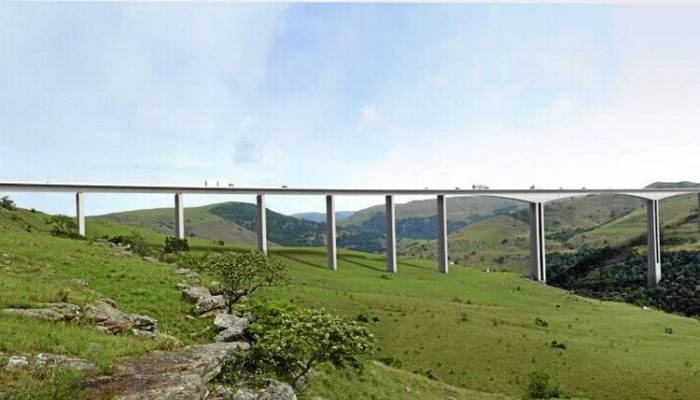The South African National Roads Agency Limited’s (Sanral’s) N2 Wild Coast Toll Road (N2WCTR) project that covers the construction of two mega bridges in South Africa, is expected to begin between August and October this year.
Also read:Zimbabwe inks US$984 deal for Harare-Beitbridge highway dualisation project
This is according to Sanral’s bridge network manager Edwin Kruger. He declined to comment on the value of the Msikaba and Mtentu bridges on account of the tenders being in the negotiation phase. However, he said the estimated cost ranges from $114-$136.8m each.
Mr. Kruger also explained that since local contractors have not built such bridges before, their skills will be supplemented by international contractors who have acquired the experience.
Furthermore, funding for the bridges is set to come from a combination of government funding s well as borrowing, with only a portion of the same expected to be repaid through toll fees.
Also read:Concerns raised over delay to construct Bridge at Ferry Channel in Kenya
The Msikaba and Mtentu bridges form the backbone of the greenfields portion of the N2WCTR. The toll road project is one of government’s 18 Strategic Integrated Projects, which were identified to support economic development and boost service delivery in the country’s poorest provinces.
The first phase of the project which is projected to take two to three years to reach completion has already started with the construction of haul roads to the bridge sites.
As the first of its magnitude in South Africa, the 217m high Mtentu bridge will not only be the highest in South Africa, but also one of the longest main span balanced cantilever bridges in the world.
As such, the construction of the 1.13-km-long bridge in a remote location is a major undertaking that requires specialized engineering skills and building techniques.
Similarly, the 580-m-long Msikaba bridge will cross the Msikaba river gorge to be the longest span cable-stayed suspension bridge in South Africa – and possibly Africa.
The bridge’s specific design is for purposes of ensuring the construction of the bridge causes no direct impact on the environment in the gorge almost 200 m below.
Pedestrian sidewalks will be constructed on either side of both bridges and view sites off the bridges will provide special viewing points for tourists as well as serve to connect communities on either side of the gorges.
The road is projected to increase mobility through an area that is currently isolated from the rest of South Africa.

